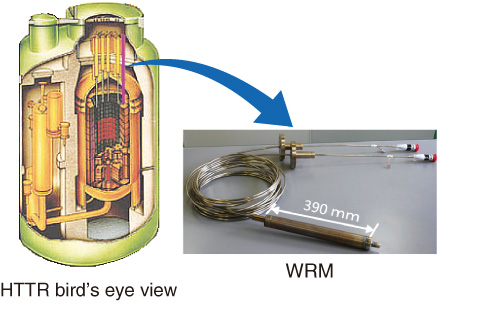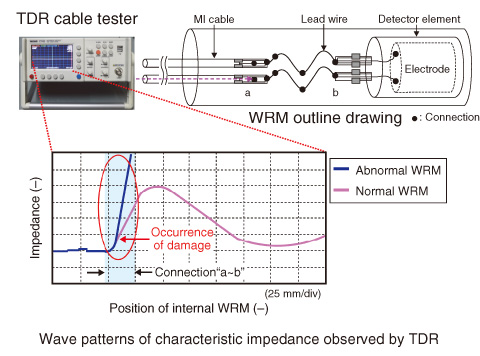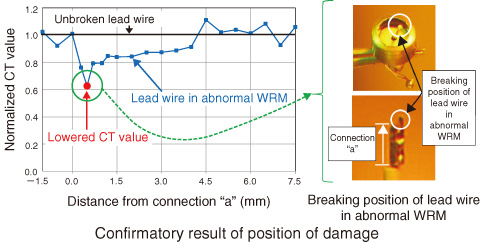
Fig.13-16 Wide-Range Monitor (WRM)

Fig.13-17 Application of electrical inspection method to WRM

Fig.13-18 Non-destructive and destructive inspections of abnormal WRM
Wide-Range Monitors (WRMs) are installed inside the reactor pressure vessel of the High-Temperature engineering Test Reactor (HTTR). The WRMs are very important safety instruments that measure the neutron flux to transmit the reactor scram signal and prevent such abnormal power excursion events in the HTTR (Fig.13-16). Because the WRM is activated by neutrons, it is difficult to examine its intactness from outside of the core. For this reason, it has been expected that a reliable inspection method would be developed to guarantee its intactness in operation by detecting signs of damage to the WRM. Therefore, a new damage detection technique was examined using an electrical inspection method. An abnormal WRM, which became malfunctioning in the HTTR, was inspected in detail to verify the proposed method and also to investigate the cause of the malfunction.
Here, the selected electrical inspection method was Time-Domain Reflectometry (TDR), which is generally used to detect the breaking of cable wires. First, the observed wave patterns of the characteristic impedance of normal and abnormal WRMs were compared. As a result, the existence of damage in the lead wire of the WRM was successfully identified by recognizing a significant change in the wave pattern of the characteristic impedance (Fig.13-17). Second, non-destructive and destructive inspections were applied to the abnormal WRM to verify the result of the electrical inspection method. A high-energy X-ray Computed Tomography (CT) inspection confirmed that the CT value was lower at the same part where the damage was detected by the proposed electrical inspection method. The destructive inspection directly verified that the lead wire was broken at the specified damaged part (Fig.13-18).
Thus, a new damage detection method was established that uses electrical inspection while keeping the WRM installed in the core. The results contribute to upgrading of the High-Temperature Gas-cooled Reactor (HTGR) technology and could be a promising technology for future commercial HTGRs.